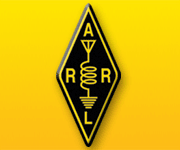What is Amateur Radio?

Amateur Radio (also known as Ham Radio) is both a fun and important hobby that is enjoyed by many people all over the world! We Amateur Radio operators have licenses issued by the federal government that allow us to talk to other people around the world for fun, using voice, Morse code (CW), digital modes, satellites, or even using the moon (to bounce signals off of). In the United States hams are licensed by the Federal Communications Commission (FCC).
Amateur Radio is the perfect forum for meeting new people, experimenting with electronics, going to Ham conventions called “hamfests,” checking into on-air meetings called “nets,” participating in transmitter hunts, talking to each other via television from across the country, and more! On-air contests also grace our ham bands many times throughout the year, offering hams the opportunity to compete with each other in making as many contacts as possible in a certain period. The fun activities mentioned above are just a few of the many offered by Amateur Radio!
Of course Amateur Radio is an exciting hobby, but it is also very important to every person in our country and the world, whether they know it or not. When a disaster strikes an area, many things occur. Telephone systems (including cell phones and the internet) become grid-locked due to the sudden demand from people trying to use them – or they fail altogether. Public service and government agency communication systems also suffer from the same problem, in addition to failing because they are not portable, and they cannot communicate with non-compatible radios used by a different agency. Commercial utilities also become disrupted, including electricity, causing government and public service communications ineffective or impossible. All of this creates a huge problem when emergency traffic needs to be passed and rescue efforts need to be coordinated.
That is when Amateur Radio comes into the scene. When all other forms of emergency communications fail, Amateur Radio is there to save lives because of its versatility, portability and effectiveness. Entire stations used for local, nation- and/or world-wide communications can be set up in minutes, at any location, completely independent of the availability of commerical power. Amateur Radio is also not limited to just a few “channels,” much like other radio systems used in emergencies – we have complete bands of frequencies ranging from “DC to daylight” (from 1.8 MHz to beyond 300 GHz) that allow us to communicate whereever is needed in the RF spectrum. Finally, Amateur Radio operators enjoy the hobby everyday. As such, we are trained to communicate in any situation just by having fun in the hobby. This competence allows Hams to be extremely effective when disaster strikes and there is no room for mistake when providing crucial communications.
Amateur Radio operators have provided emergency communications after earthquakes in California, hurricanes on the east coast, blizzards in the northeast, and floods in the Midwest. They have done so at the sides of government officials, police chiefs and fire chiefs whose radio systems no longer work, or are very inefficient. This was the case in the massive Cerro Grande forest fire that burnt part of Los Alamos, NM in 2000. This was also very much the case in New York City on September 11, where Amateur Radio provided the absolute majority of emergency communications and traffic passage in the first 24-48 hours following the terrorist attack. Hams also play a huge role in local search & rescue missions, and in recovering aircraft that have crashed because of their radio direction finding (DFing) skills and ability to maintain perfect communications in the most rural parts of the country.
It comes down to this: Amateur Radio provided the most critical emergency communications in every man-made or natural disaster you read in a newspaper or watch on TV. And Amateur Radio will continue to do this following every disaster you read about or hear of in the future. We have a great time talking to people all over the world, but when disaster strikes, we are there to assist, with our own effective equipment, on our own time, without anyone owing us a dime.
Having mentioned all this, you are invited to join the great world of Amateur Radio yourself! As I stated, you need a license to use Amateur Radio legally, and getting one isn’t that hard! Children as young as five and people in their nineties have obtained their licenses. You can buy study manuals at most electronic stores and be ready for the test in a few months. There are three different licenses that can be earned, each giving the licensee more operating privileges. These licenses, from lowest to highest, are Technician, General, and Amateur Extra. Tests are composed of multiple choice questions dealing with rules, regulations and electronic theory (You don’t have to be an engineer to learn the questions dealing electronics…with a little practice they are easy!). For more information on becoming an Amateur Radio operator, please visit the American Radio Relay League (ARRL) homepage and purchase their “Now You’re Talking!” Technician license preparation book.
I am part of what is the best hobby in the world. And you could be, too! If you have any questions, feel free to e-mail me.
Information used with permission from Brian N5ZGT – N5ZGT’s Page

